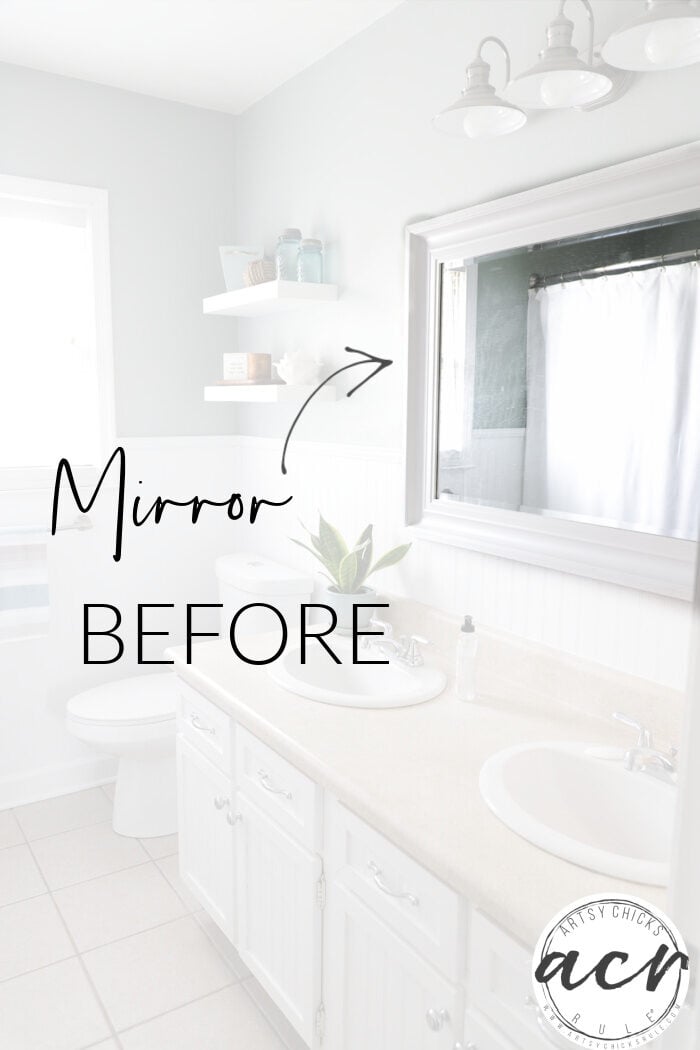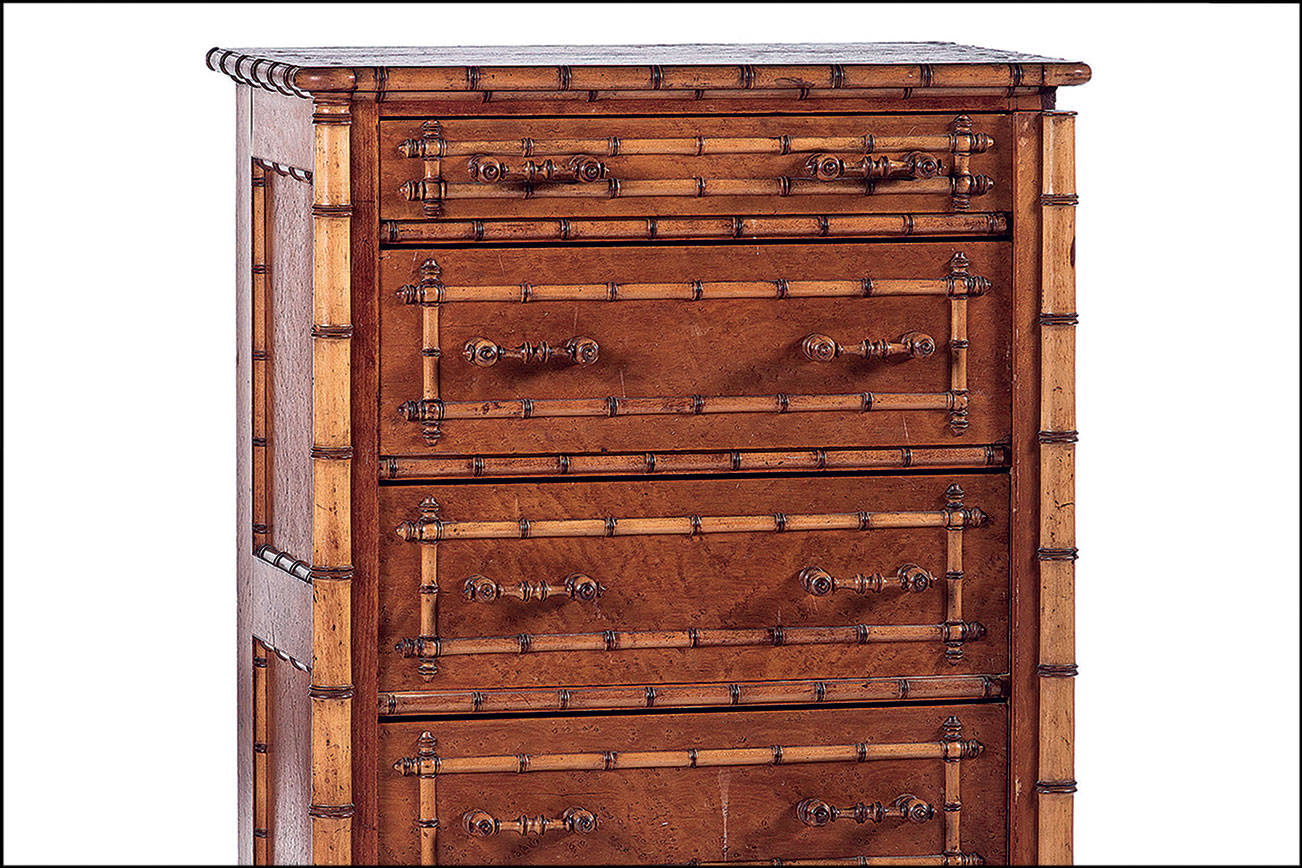
DIY Patina Faux Finish with Paint
I started this project a while back but never finished it. I started going in one direction with it and…stopped. Do you have any projects like that?? I bet you do! Well, when I realized that our “Trash to Treasure” was only a few days away and I didn’t have anything remotely ready, I pulled this one out and decided to make it pretty! It was certainly almost in the trash pile or at least the “I’ve forgotten all about you” pile! ha!
If you remember, we recently finished our hall bath update/remodel. Did you miss it? If so, you can catch the full remodel, even painting the tile floor, here. >>> Hall Bath Remodel Reveal (x2!)
The mirror that was in there (pictured below) was replaced by a new mirror. The white framed mirror needed a new look. White is great and was a nice, new addition to the first bath remodel we did years ago in there. But it was time for a full update.
Which means I had an extra white mirror on my hands and well, blah. Let’s do something fun with it!
So I did.
DIY Patina Faux Finish with Paint

So, I had begun this makeover months ago. I had taken it down, taped it up to protect the mirror, and spray-painted it gold. I realized that was not what I wanted to do with it but wasn’t sure just

